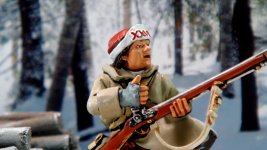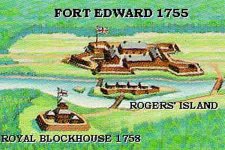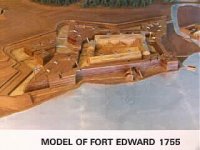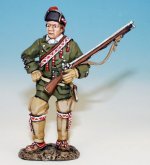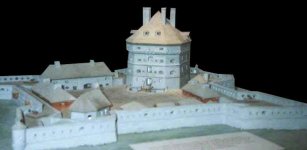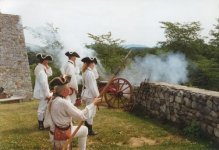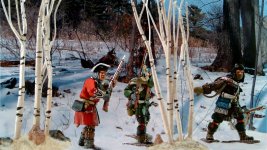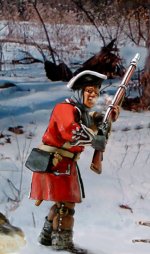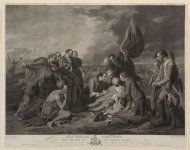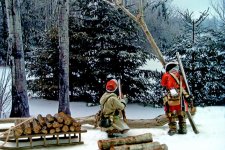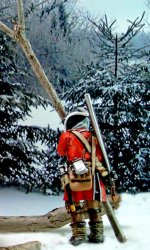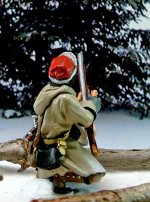PolarBear
Major
- Joined
- Feb 24, 2007
- Messages
- 6,706
Herein begins the tale of a member of the British 27th Regiment in the woods of New York during the French & Indian War. The time is March 1758. A few members of 27th Regiment of Foot were to participate in the famous Battle on Snowshoes near Lake George.The men of the 27th were assigned to supplement Captain Robert Rogers and his Rangers who were being sent by Lt. Col. William Haviland (27th Regt. of Foot), post Commander-in-Chief at Fort Edward on a reconnaissance patrol against French fortifications at Fort Carillon and Crown Point.
The member of the 27th who is the focus of our tale was one Charles Pelham, formerly of Maidstone, Kent in England. Pelham was 19 years of age when the 27th Regiment sailed for North America to participate in what historians would later call the French & Indian War. In England Pelham had been apprenticed to his uncle Peter Pelham, a local blacksmith. The daily work near the heat of a forge turning molten iron into horseshoes did not excite the young man's thirst for adventure. So when he saw a recruiter in town looking for members for the 27th Regimant of Foot and learning that the Regiment would soon be sailing for North America, the young Charles Pelham jumped at the chance to to trade his present life for something more exciting. At the time, however, he was unaware that his decision was to make him a participant in a war between two empires for the future of a continent.
To be continued.....
Below is a picture of Pelham on patrol in the winter of 1758 wearing a winter coat over his red 27th Regt. uniform.
The member of the 27th who is the focus of our tale was one Charles Pelham, formerly of Maidstone, Kent in England. Pelham was 19 years of age when the 27th Regiment sailed for North America to participate in what historians would later call the French & Indian War. In England Pelham had been apprenticed to his uncle Peter Pelham, a local blacksmith. The daily work near the heat of a forge turning molten iron into horseshoes did not excite the young man's thirst for adventure. So when he saw a recruiter in town looking for members for the 27th Regimant of Foot and learning that the Regiment would soon be sailing for North America, the young Charles Pelham jumped at the chance to to trade his present life for something more exciting. At the time, however, he was unaware that his decision was to make him a participant in a war between two empires for the future of a continent.
To be continued.....
Below is a picture of Pelham on patrol in the winter of 1758 wearing a winter coat over his red 27th Regt. uniform.


